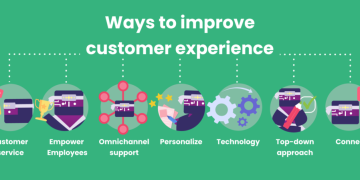In the fast-paced world of business, where time is money and convenience reigns supreme, the speed of service has become a crucial factor in determining customer satisfaction. Whether it’s waiting in line at a retail store or anticipating the arrival of a meal at a restaurant, customers today expect prompt and efficient service. Therefore, businesses must continuously seek ways to streamline their operations and improve speed of service to meet these expectations.
Understanding the Importance
The speed of service directly impacts customer retention, loyalty, and overall brand perception. Research indicates that customers are more likely to return to businesses that provide quick and efficient service, leading to increased revenue and growth opportunities. Conversely, prolonged wait times can result in customer frustration, negative reviews, and ultimately, loss of business.
Identifying Pain Points
To improve the speed of service effectively, businesses must first identify the key areas where delays commonly occur. This could include order processing, checkout procedures, delivery times, or customer service response times. By pinpointing these pain points, businesses can implement targeted strategies to address them and enhance the overall service experience.
Implementing Technology Solutions
In today’s digital age, technology plays a pivotal role in accelerating service delivery. From automated order processing systems to mobile apps for faster transactions, businesses can leverage various technological solutions to streamline operations and reduce wait times. For example, self-service kiosks in restaurants and supermarkets empower customers to place orders or check out quickly, thereby minimizing queues and expediting service.
Optimizing Workflow
Efficient workflow management is essential for improving the speed of service in any business setting. This involves analyzing existing processes, identifying bottlenecks, and reorganizing tasks to minimize idle time and maximize productivity. By implementing lean principles and employing techniques such as batch processing and cross-training staff, businesses can optimize workflow efficiency and deliver faster service without compromising quality.
Prioritizing Training and Development
Well-trained and motivated employees are instrumental in delivering speedy and satisfactory service. Investing in comprehensive training programs equips staff with the necessary skills and knowledge to perform their roles efficiently. Additionally, ongoing coaching and performance feedback help employees identify areas for improvement and strive for excellence in customer service delivery.
Streamlining Communication Channels
Effective communication is essential for coordinating activities and ensuring smooth operations. By establishing clear communication channels within the organization, businesses can minimize misunderstandings, prevent delays, and facilitate faster decision-making. Whether through digital platforms, instant messaging tools, or regular team meetings, transparent communication fosters collaboration and enhances overall efficiency.
Monitoring and Feedback Mechanisms
Continuous monitoring of service performance is crucial for identifying deviations from established standards and implementing corrective measures promptly. Businesses can leverage customer feedback mechanisms such as surveys, reviews, and satisfaction ratings to gauge service quality and identify areas for improvement. Additionally, real-time analytics and performance metrics enable businesses to track key performance indicators (KPIs) and make data-driven decisions to enhance speed of service.
Conclusion
In today’s competitive business landscape, the speed of service can be a decisive factor in attracting and retaining customers. By prioritizing efficiency, leveraging technology, optimizing workflows, investing in employee training, fostering communication, and implementing robust monitoring mechanisms, businesses can enhance their service delivery and stay ahead of the curve. Ultimately, a commitment to improving the speed of service not only enhances customer satisfaction but also drives business growth and success in the long run.


























